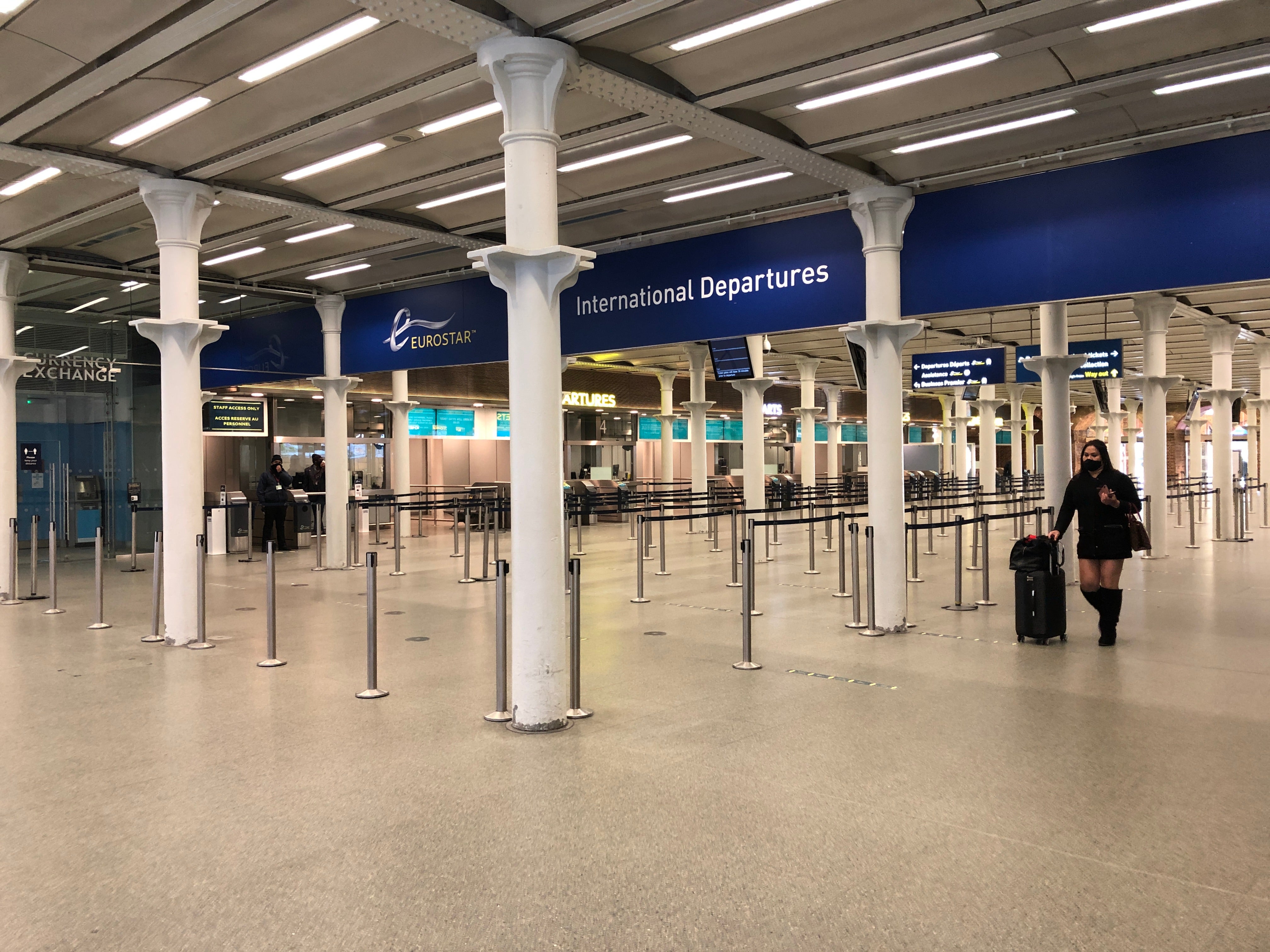London St Pancras International: a glimpse into the future?
Destination screens boast of the delights that await down the line: Alfreton, Brighton, Canterbury, Derby…

Despite today’s easing of lockdown measures, indoor drinking and dining is not permitted in England for another five weeks.
Yet at Britain’s most beautiful railway station, London St Pancras International, the future appears to have arrived early.
The terminal has a dozens dispensers of food and drink, from Starbucks to the Sourced Market Deli. Outside many of them, tables are busy with waiting passengers. Or were they citizens who simply wanted to feel the acceleration towards full unlocking?
While the tables are technically outside the cafes, they and their occupants are comfortably dry and warm thanks to the majestic station canopy. All the more appreciated on a day that began with a flurry of snow.
St Pancras may be the UK’s premier “desti-station,” but plenty of people were in the business of going places. Initial figures from Transport for London suggested that Tube use was up 18 per cent.
Many of them were accessing the London terminus that offers a wider range of locations than any other in Britain.
Southeastern, Thameslink and East Midlands Railway were busier than they have been for months.
The destination screens boast of the delights that await down the line: Alfreton, Brighton, Canterbury, Derby …

Yet the most exotic locations are missing: Lille, Paris, Brussels, Rotterdam and Amsterdam.
Eurostar, the Channel Tunnel train operator that normally operates dozens of trains each day between London and Continental Europe, is running just two trains daily.
Passenger numbers on Eurostar have dropped to just one per cent of pre-pandemic levels.
The firm, majority owned by French Railways, is deeply in debt. While the UK’s outright ban on non-essential travel to and from the rest of the world is due to end on 17 May, there is little sign that France, Belgium and the Netherlands will be on the government’s “green list” any time soon.
Southeastern announced its trains will stop at Ebbsfleet International and Ashford International – even though there is no imminent prospect of a Eurostar train calling at either of them.
Départs, invited the sign above the check-in gates. But the only trains of the day to Paris, and Amsterdam via Brussels, had long gone.
Before the coronavirus pandemic – and Brexit – Eurostar thrived on its market stranglehold between near European capitals. But it now faces an uncertain future.
Join our commenting forum
Join thought-provoking conversations, follow other Independent readers and see their replies
Comments
Bookmark popover
Removed from bookmarks